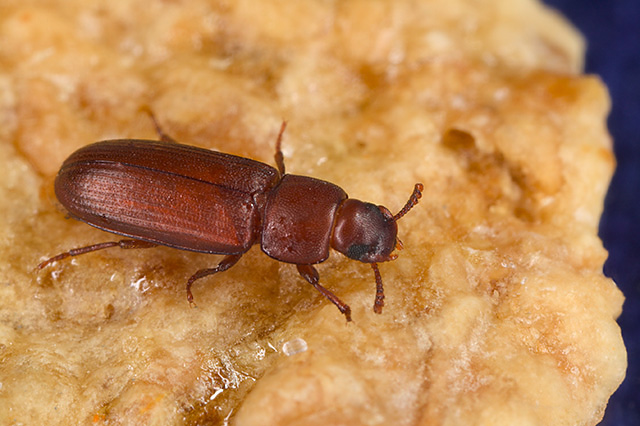Output: Publications
- Bednarska AJ, Stępień K (2015). Concentration
dependent toxicokinetics of copper in the red flour
beetle Tribolium castaneum (Coleoptera:
Tenebrionidae). Ecotoxicology, 24: 1823-1830. DOI
10.1007/s10646-015-1518-5.
- Maino JL, Kearney MR (2015). Ontogenetic and
interspecific scaling of consumption in insects. Oikos,
124 (12): 1564-1570. DOI
10.1111/oik.02341.
- Llandres AL, Marques GM, Maino JL, Kooijman SALM,
Kearney MR, Casas J (2015). A dynamic energy budget for
the whole life-cycle of holometabolous insects.
Ecological Monographs, 85 (3): 353-371. DOI
10.1890/14-0976.1.
- Maino JL, Pirtle E, Kearney MR (2016). The effect of
egg size on hatch time and metabolic rate: theoretical
and empirical insights on developing insect embryos.
Functional Ecology 31:227-234. DOI
10.1111/1365-2435.12702.
Output: Presentations
- Maino J, Jevtić D, Bednarska AJ (2014). Predicting
energetic consequences of toxic stress in holometabolic
insects. Abstract Book, poster presented at the SETAC
Europe 24th Annual Meeting - Science across bridges,
borders and boundaries 11-15 May, Basel, Switzerland:
Poster 386. Handout.
- Bednarska AJ, Laskowski R, Makarowski W, Stępień K,
Gibas P (2015). Effect of copper contamination on Tribolium
castaneum: large differences in sensitivity
between life history traits. Abstract Book, poster
presented at the SETAC Europe 25th Annual Meeting -
Environmental protection in a multi-stressed world:
challenges for science, industry and regulators, 3-7 May
2015, Barcelona, Spain: Poster 251. Handout.
- Bednarska AJ, Stępień K (2015). Regulation of internal
copper concentration by the red flour beetle Tribolium
castaneum. Abstract Book, , poster presented at
the SETAC Europe 25th Annual Meeting - Environmental
protection in a multi-stressed world: challenges for
science, industry and regulators, 3-7 May 2015,
Barcelona, Spain: Poster 251. Handout.
- Barsi A, Maino J, Jager T, Stepien K, Gibas P,
Bednarska AJ. A mechanistic effect model for
holometabolous insects: a case study for the red flour
beetle (Tribolium castaneum) exposed to copper.
Poster presented at the 26th
SETAC Europe conference in Nantes, France. 22-26
May, 2016 (poster). Abstract. Handout.
- Maino JL, Barsi A, Jager T, Stepien K, Gibas P,
Bednarska AJ. Quantifying the energetic cost of toxicant
stress in insects: a full life-cycle approach. Poster
presented at the 26th
SETAC Europe conference in Nantes, France. 22-26
May, 2016 (poster). Abstract. Handout.
|


